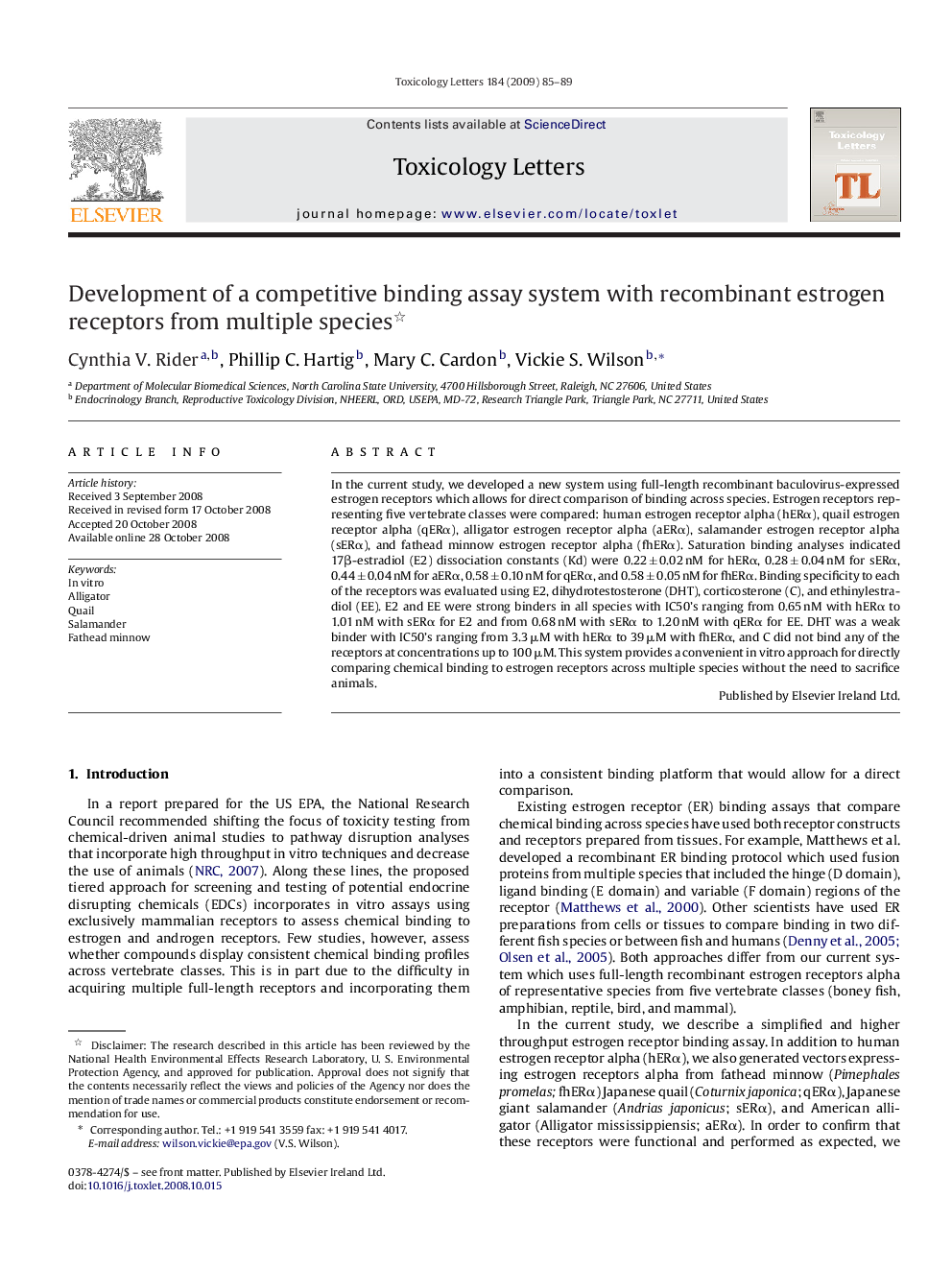| Article ID | Journal | Published Year | Pages | File Type |
|---|---|---|---|---|
| 2601249 | Toxicology Letters | 2009 | 5 Pages |
In the current study, we developed a new system using full-length recombinant baculovirus-expressed estrogen receptors which allows for direct comparison of binding across species. Estrogen receptors representing five vertebrate classes were compared: human estrogen receptor alpha (hERα), quail estrogen receptor alpha (qERα), alligator estrogen receptor alpha (aERα), salamander estrogen receptor alpha (sERα), and fathead minnow estrogen receptor alpha (fhERα). Saturation binding analyses indicated 17β-estradiol (E2) dissociation constants (Kd) were 0.22 ± 0.02 nM for hERα, 0.28 ± 0.04 nM for sERα, 0.44 ± 0.04 nM for aERα, 0.58 ± 0.10 nM for qERα, and 0.58 ± 0.05 nM for fhERα. Binding specificity to each of the receptors was evaluated using E2, dihydrotestosterone (DHT), corticosterone (C), and ethinylestradiol (EE). E2 and EE were strong binders in all species with IC50's ranging from 0.65 nM with hERα to 1.01 nM with sERα for E2 and from 0.68 nM with sERα to 1.20 nM with qERα for EE. DHT was a weak binder with IC50's ranging from 3.3 μM with hERα to 39 μM with fhERα, and C did not bind any of the receptors at concentrations up to 100 μM. This system provides a convenient in vitro approach for directly comparing chemical binding to estrogen receptors across multiple species without the need to sacrifice animals.
